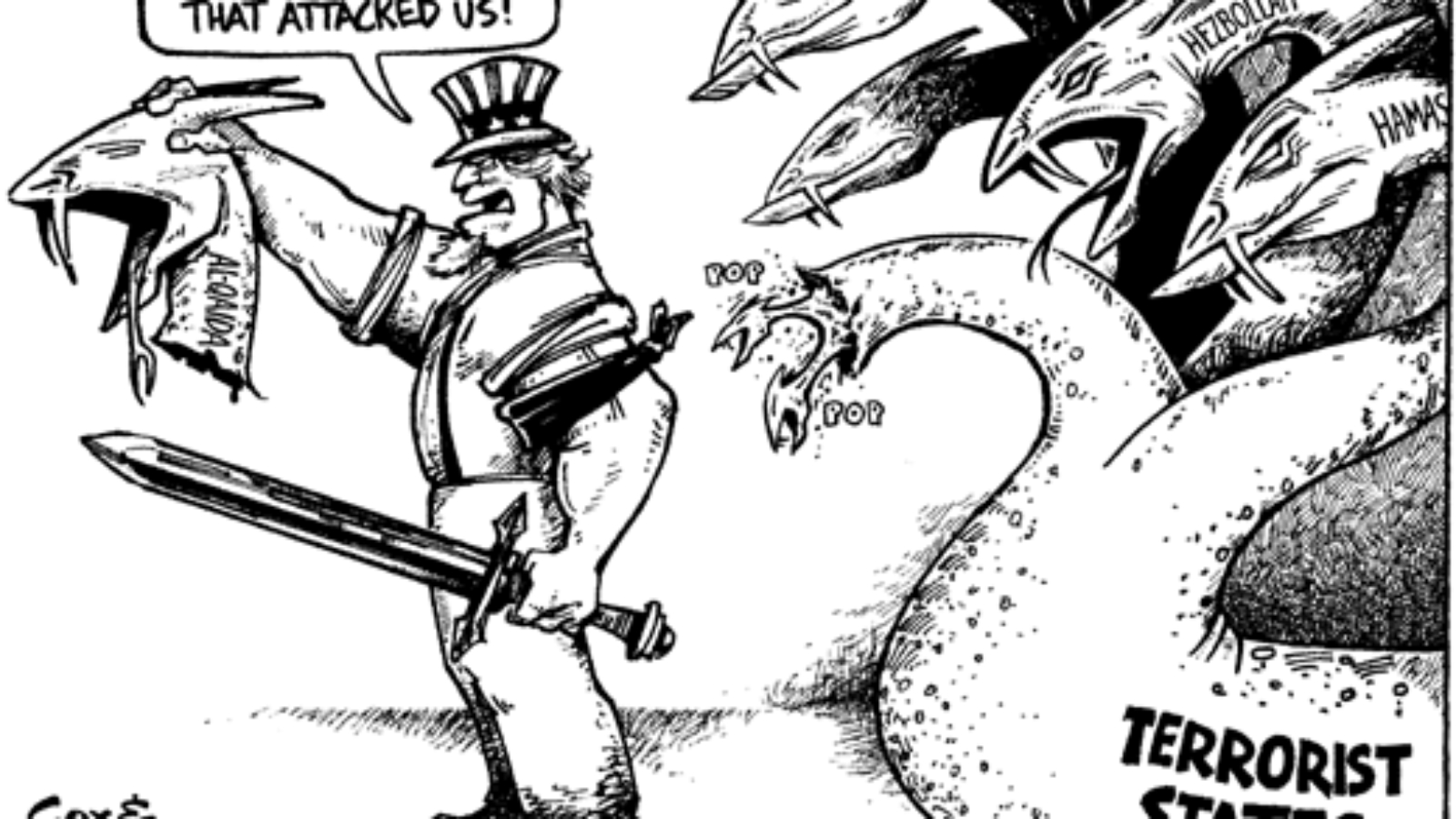by Ryan French
In early October the Global War on Terror entered its tenth year, with no clear end in sight. Though drone strikes have proved their worth by dividing terrorist leadership from their followers, especially in the AfPak region, there are discouraging setbacks, such as the recent near-misses by would-be Times Square bomber Faisal Shahzad and Umar Abdulmutallab, the infamous “underwear bomber” of Christmas Day 2009. Unless new strategies are adopted that undermine the credibility of terrorist leaders with their followers, it is likely that the West will suffer a successful attack from what has shown itself to be a patient and determined foe. As the Taliban have boasted, “NATO has all the watches, but we have all the time.”
On Tuesday, October 26, the World Policy Institute and EastWest Institute co-hosted Richard Barrett, coordinator of the Al Qaeda Taliban Monitoring Team for the UN, and Tom Parker of Amnesty International in the annual Ian Cuthbertson Memorial Lecture on improved strategies in the fight against radicalism. In Pakistan, Barrett pointed out, public support for the current U.S. counter-terrorism strategy holds at a dismal 20 percent. Because terrorists capitalize on this sort of widespread opposition to gain sympathizers and recruits, the U.S. must supplement its counter-force tactics with innovative policy approaches. Barrett recommended that states consider education and messaging as methods to decrease the appeal of terrorism to discontented Muslims. Although, as Barrett mentioned, 90 percent of the victims of Al Qaeda attacks are Muslim, Osama bin Laden is nevertheless able to rally supporters through his claims that the West is crusading against Islam. To be victorious in this war of competing narratives and ideas, governments should start by correcting the incomplete, inaccurate information held by the consumers of Islamist ideology.
Tom Parker, Policy Director for Terrorism, Counter-Terrorism, and Human Rights at Amnesty International USA, echoed Barrett’s sentiment–the heart of the conflict against terrorism is an issue of competing ideas and narratives. Muslims susceptible to radicalization must be educated in order to mitigate the information asymmetry that fosters terrorism. To that end, the U.S. must engage in a war of information and publicize the human toll that Al Qaeda's attacks are taking on Muslims. Al Qaeda relies on this information asymmetry to ensure the allegiance of its followers. If these adherents are exposed to new ways of thinking, particularly from credible religious leaders who emphasize the atrocities committed by terrorists upon Muslims and the Koran’s strict ban on suicide, there is potential to reverse or prevent the radicalization process.
By solving the problem of incomplete information that attracts young radicals to bloodshed, the seeds of a viable counter-narrative to the violent worldview of terrorist leaders can be sown. There are encouraging signs that such twisted, radicalized groupthink is already being challenged. In December 2007, Ayman al-Zawahiri, Al Qaeda's second-in-command, participated in an online question-and-answer session with an audience of jihadis. One of the questions asked was, how do you justify killing Muslim civilians? Zawahiri went on to give a lengthy diatribe as to why Al Qaeda’s actions were permissible, but his defensive reaction to the question is proof of the frailty of Al Qaeda’s narrative. The counter-narrative must be implanted by unbiased, credible figures in Islam, such as the respected cleric Muhammad Tahir ul-Qadri who issued a fatwa in March against suicide terrorism, declaring it to be an unforgivable sin. One of the strategies employed by Saudi Arabia has been to embed jihadist chatrooms with agents who offer an alternative “voice of reason” to the violent tactics discussed by the participants.
Forging a successful counter-narrative will achieve semantic infiltration, in which Al Qaeda and other terrorist groups are pressured to acknowledge positive values in their public statements, such as concern for human rights. As Parker put it, this will “force [terrorists] into a value system that they can't adhere to,” further undermining their popular support. Semantic infiltration appears to already be underway within Al Qaeda–earlier this month, Osama bin Laden released two recorded messages calling for humanitarian aid to victims of the recent flooding in Pakistan, as well as action to combat famine and climate change. Surprisingly, there are no calls for violence in either videotape. Indeed, the so-called Galula principle that successful counter-terrorism is 80 percent “hearts and minds” and only 20 percent conflict appears to hold sway, as the terrorists themselves seem to operate by this principle. Many groups have dubious charity wings that vie for the good graces of the public in a twisted effort to boost their political capital.
Ironically, the clearest example of the phenomenon of semantic infiltration, Barrett claimed, has been through Western use of the word, “jihad.” As he said, In Islam, jihad is a highly nuanced concept, referring foremost to one's internal spiritual struggle. Since 9/11, however, it has been seized by Western media outlets as a buzzword for Islamic “holy war,” thereby reinforcing the idea of a cultural conflict between Islam and the West. This has served to increase cross-cultural antagonism, strengthening the hand of the violent narrative championed by Al Qaeda.
Without supplementing the current counter-force strategy against terrorism with innovative policies, the War on Terror is simply a perpetuation of the status quo. In order to avert the distressingly real possibility of a “Forever War” against the proverbial hydra of terrorism, nations ought to view the conflict as one of competing ideas. Until the violent narrative espoused by bin Laden and his disciples is viewed with universal disdain by Muslims, the risk of radicalization and terrorist attack will continue to loom large. In the meantime, bin Laden will continue to dominate the political narrative by framing Al Qaeda and Islam as victims of Western belligerence: “As you kill us, you will be killed… the initiator of the injustice is the true aggressor.”
Image, “Hydra-X” from Crooks & Forkum Editorial Cartoons.
